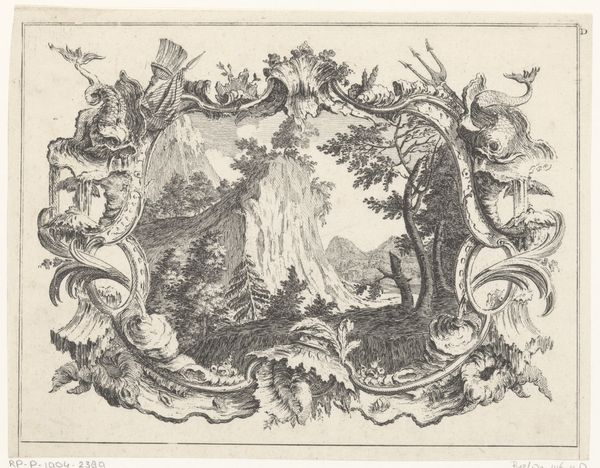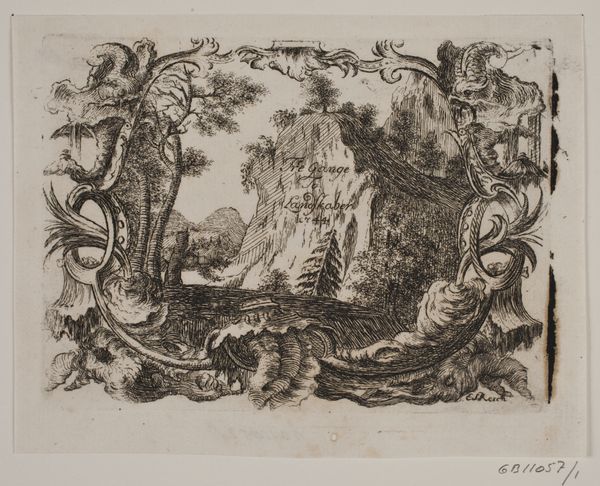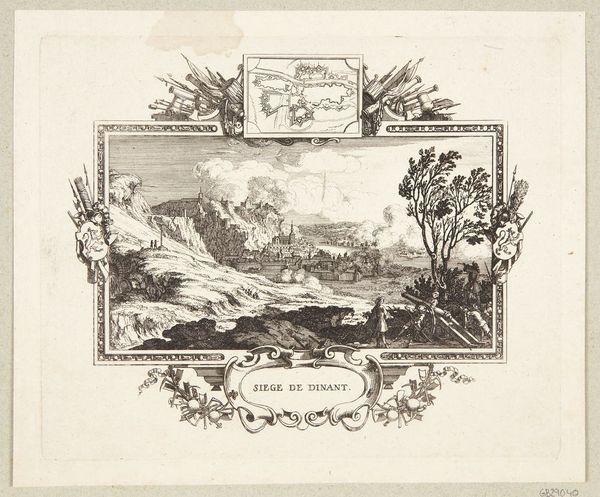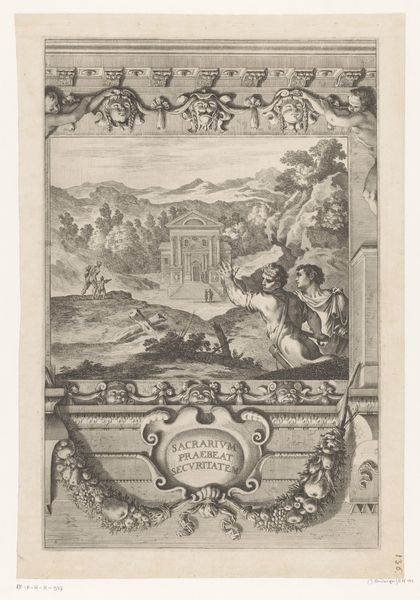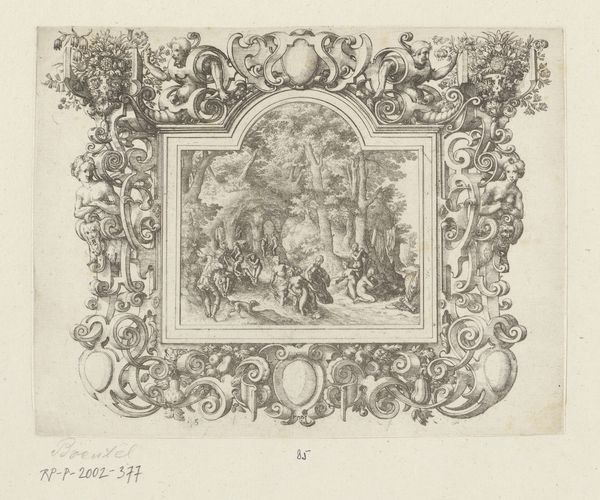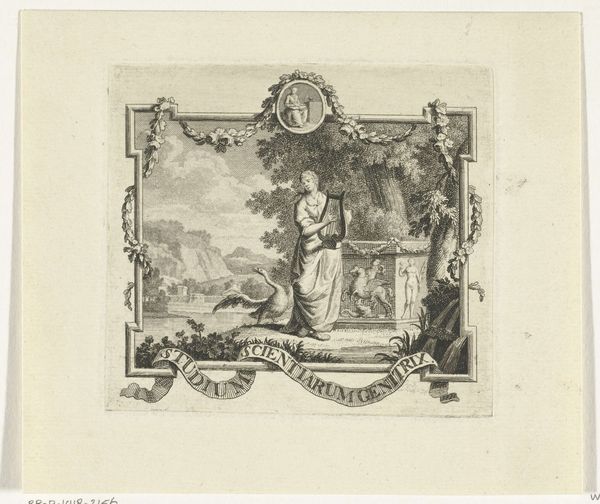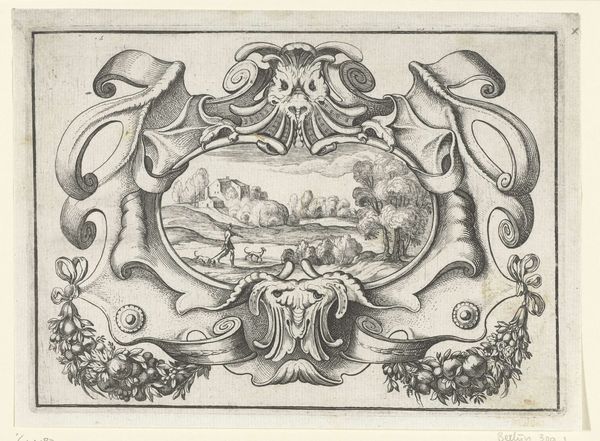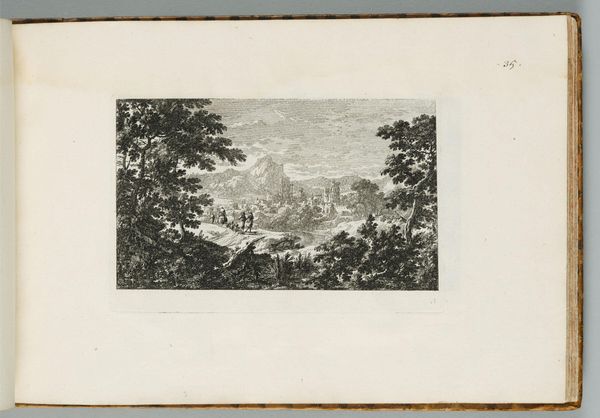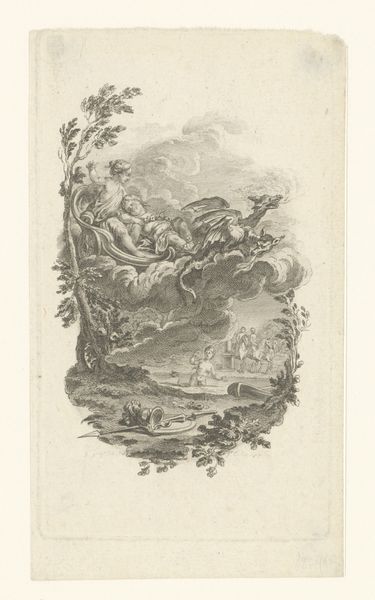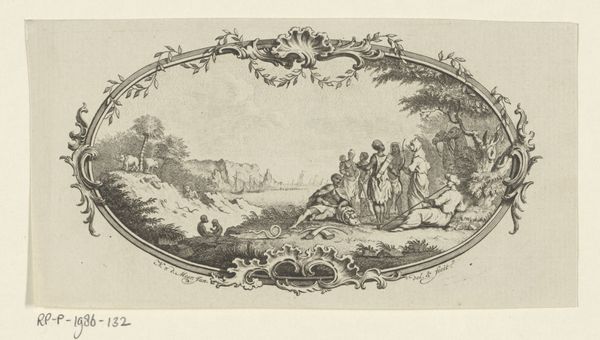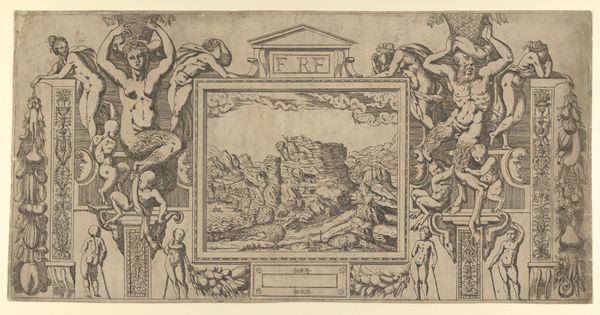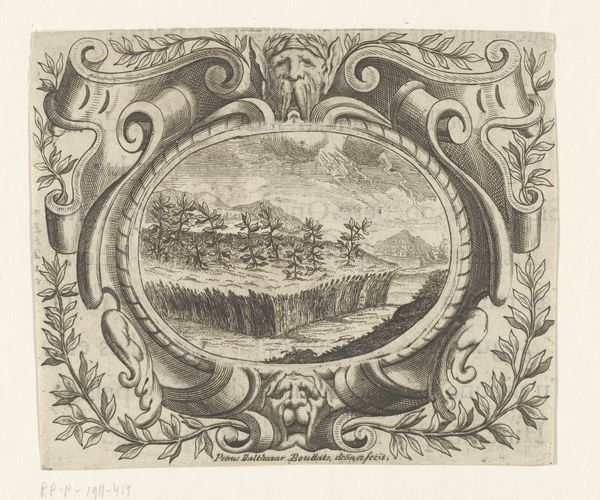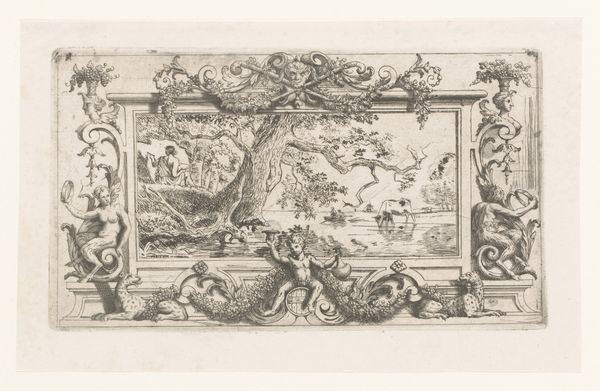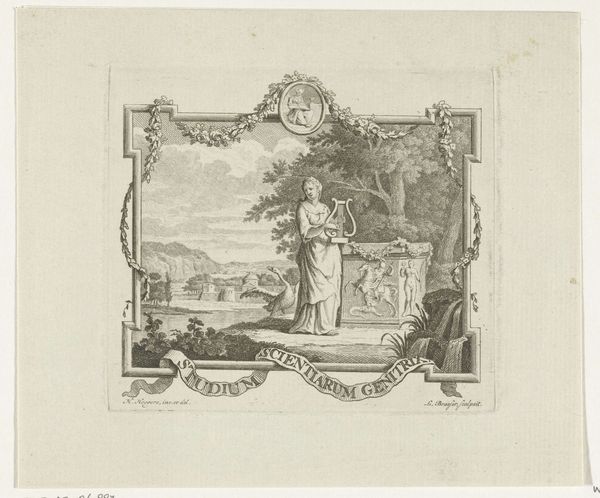
Ornamentomlijsting met rolwerk en figuren, waarin landschap met Venus en Adonis 1591 - 1633
0:00
0:00
print, engraving
# print
#
landscape
#
mannerism
#
figuration
#
form
#
line
#
history-painting
#
engraving
Dimensions: height 205 mm, width 270 mm
Copyright: Rijks Museum: Open Domain
Curator: Good morning. We’re standing before an engraving at the Rijksmuseum titled, "Ornamentomlijsting met rolwerk en figuren, waarin landschap met Venus en Adonis." Its creation is attributed to an anonymous artist sometime between 1591 and 1633. Editor: The ornate border immediately grabs attention. It feels very theatrical, almost like a stage set framing a quieter, more natural scene within. Curator: Precisely! The landscape at the center depicts the classical tale of Venus and Adonis. Observe how it's framed by an elaborate ornamental border with grotesque figures and scrolling foliage, a hallmark of Mannerist style. The contrast between the pastoral scene and the surrounding embellishment is striking. Editor: The artist has employed very fine line work. The texture achieved, particularly in rendering the foliage and the distant mountains, is remarkable for an engraving. It does appear as a stage but almost in two disparate ways. The foreground versus what recedes seems so distinct in texture. Curator: It reflects the Mannerist obsession with artifice and invention. The composition directs the viewer’s gaze inward through complex arrangements of forms and surface patterns rather than purely through the narrative element. What I find intriguing, too, is the combination of classical mythology within this highly stylized, arguably unnatural frame. The border does take precedence over the narrative scene. Editor: It's interesting how this layering serves the overall composition. We’re meant to consider the boundary between the real, represented by the pastoral scene, and the artificial, embodied by the ornamental border. But considering Mannerism existed during periods of social, religious, and political conflict, do you think the border is intentionally built with these motifs? Is the landscape serving more as a symbol of escape, or hope? Curator: It's possible. Though without specific documentation it’s conjecture. That relationship between image and frame mirrors the relationship between reality and its presentation, and I believe that’s a potent commentary in itself, speaking perhaps to the role of spectacle in society. But more important is how it compels you, me, as the viewer, to pause and see form itself. Editor: Agreed, it definitely causes one to linger. Thank you for sharing these insights. Curator: My pleasure.
Comments
No comments
Be the first to comment and join the conversation on the ultimate creative platform.
